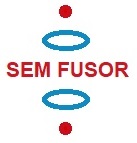
A new idea to obtain clean fusion energy
Home Introduction Calculations Videos Facebook Contact Sitemap
13 Confinement of positive ions and electrons with a static electromagnetic field
 A
configuration with six rings (two einzel lenses)
A
configuration with six rings (two einzel lenses)
|
See also En.wikipedia.org/wiki/Einzel_lens Image from this Wikipedia page showing a schematic drawing of an Einzel lens.
Remark: According my opinion the field lines should be perpendicular near the
surface of a conductor. In my simulation of the SEM fusor there are three rings. These rings can be
charged with a static voltage. Fig. 1. Simulation of a Einzel lens
D+ ions are generated with a upwards vertical speed of 3E6 m/s. The x and y positions are random within bounderies. In the program: (hydrogen=deuterium ion) hydrogen[i].x:=0.5+ ( - 0.5 + random) /7;
{0,43<=x<=0,57} hydrogen[i].m:=mp {=2*1.6726E-27} Coordinate system.jpg (see also Droomcomputersimulation.html )
Fig. 2.
The same, but wih reversed voltages. Expressing the speed of the D+ ions in a voltage difference: v=1E5 m/s ->
ΔV = 105 V Fig. 3.
Fig. 4.
Fig. 5.
Changed a little bit the sourch code so that the electric field is visible
with this lower values. Fig. 6.
vz=6E5 m/s The D+ are generated with only a upwards vertical speed, <0,9 cm from the
central vertical axis.
|
|
Fig. 7. Simulation experiment.
D+ ions are generated with a upwards vertical speed of 3E5
m/s, 15 cm under the lowest blue ring. hydrogen[i].x:=0.5+ ( - 0.5 + random) /16;
{hydrogen=deuterium} {50 cm +/- 3,1 cm} De electrons are injected 8 cm above the top blue ring in the bottom half. electron[i].x:=0.50+ ( - 0.5 + random) /100; {50 cm
+/- 5 cm } No focus, no einzel lens effect. It seems to be that the strong magnetic field is causing this.The electrons stay confined between the two blue rings in the center, forming a negative cloud. An advantage of this configuration could be that, if fusion occurs in the center, then this a bit further away from the rings than in the configuration with only three rings (less danger that the rings get damaged).
|
|
Fig. 8. Simulation experiment with a magnetic bottle
field.
Some D+ ions escaped. The D+ ions are somewhat squezed in the
center.
|
|
Fig. 9. Simulation experiment.
Another simulation experiment. Shown is a cross section and the
electric field. Fig. 9. The same simulation experiment after a night running.
|
|
|
|
|